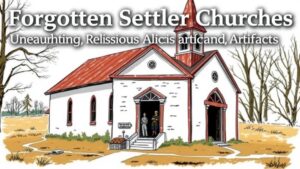The Role of Weathered Land Deeds in Unearthing Hidden Estates
The Role of Weathered Land Deeds in Unearthing Hidden Estates
The exploration of historical land deeds provides an invaluable resource in the identification and recovery of hidden estates. This article examines the significance of weathered land deeds, the historical context surrounding them, and their impact in the realm of real estate recovery, estate law, and property rights. By elucidating specific cases and integrating relevant statistics, this research aims to shed light on this often-overlooked aspect of land ownership and estate recovery.
Understanding Weathered Land Deeds
Weathered land deeds refer to property ownership documents that exhibit signs of age and deterioration yet contain critical information about the title and history of a property. e documents may be fragmented, faded, or incomplete, having survived through decades or even centuries of environmental and societal change. Despite their condition, they serve as essential artifacts in the historical narrative of property ownership.
Historical Context and Definitions
The concept of land deeds traces back to early civilizations, where agreements were recorded on clay tablets or parchment. In the United States, significant developments occurred post-Independence, with acts such as the Homestead Act of 1862 facilitating land distribution. Examining these historical frameworks allows estate researchers to understand the context and implications tied to weathered land deeds.
- Homestead Act of 1862: Provided settlers with 160 acres of public land for a nominal fee, leading to a proliferation of land deeds.
- Property Law Evolution: Changes in law over the years reflect the evolving nature of property rights, necessitating comprehensive examination of deeds.
The Importance of Weathered Land Deeds in Identifying Hidden Estates
Weathered land deeds can reveal estates that may have otherwise been overlooked due to outdated record-keeping practices. Notably, many families may unknowingly possess rights to ancestral lands due to mismanagement or improper documentation of ownership transfers. In fact, a study conducted by the National Archives revealed that as much as 20% of land ownership records contain inaccuracies or missing information, obscuring rightful ownership.
Case Studies and Real-World Applications
Several case studies exemplify how weathered land deeds have led to the identification of hidden estates. For example, in Virginia, a misfiled deed led to the recovery of a 200-acre estate owned by a family for generations. The family had long assumed their connection to the land was severed due to historical partitioning without proper documentation. Upon examining weathered deeds dated back to the early 1800s, historians and estate workers were able to establish a familial connection to the claimed land.
Plus, in New York, a thorough search of weathered land records revealed the location of a hidden estate dating back to the Revolutionary War. Researchers discovered not only the original ownership details but also connections to historical resources such as military service, further enriching the narrative for descendants seeking their heritage.
Challenges Associated with Weathered Land Deeds
While weathered land deeds provide critical insights, they also present challenges. The degradation of documents often affects readability and interpretation. Specialists in archival science have noted that deciphering old handwriting and understanding archaic legal terminology can be complex and prone to error.
- Readability Issues: Difficulty in interpreting the language used in old deeds can hinder accurate assessments.
- Legal Ambiguities: Vague descriptions of property boundaries and ownership can lead to disputes among claimants.
Conclusion and Actionable Takeaways
Weathered land deeds serve as key instruments in uncovering hidden estates, providing both historical context and legal lineage crucial for proving ownership. By leveraging archives, historians, and legal experts, individuals can navigate the challenges posed by these documents to reclaim forgotten properties. It is imperative for interested parties to engage in thorough research, utilizing both digital resources and physical archives, to fully exploit the potential of these weathered deeds.
The ongoing importance of diligent record-keeping and the preservation of historical documents cannot be overstated; they are essential in safeguarding the legacy and rights of current and future property owners. For researchers, legal practitioners, and families, the task of uncovering hidden estates through weathered land deeds is not only a journey into the past but a pathway to establishing rightful ownership in the present.



